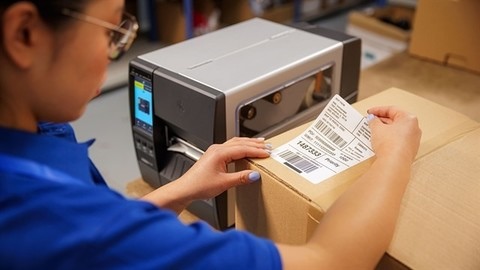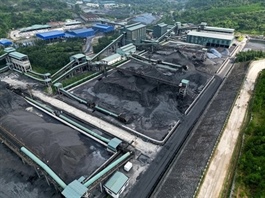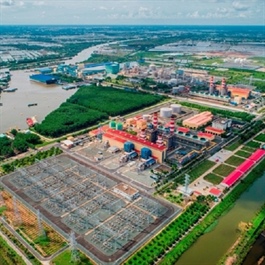Warehouse industry leaders ramp up technology investments
Warehouse industry leaders ramp up technology investments
Decision-makers in the warehouse industry, both globally and in Việt Nam, are accelerating their technology investments to enhance efficiency throughout the supply chain and future-proof their operations, experts said.

Modern technology helps warehouse companies better control their operations. — Photo Courtesy of Zebra |
This shift is driven by the growing challenges faced by warehouse leaders, who are under increasing pressure to meet demands for speed and accuracy while navigating tighter labor markets, escalating costs, and economic uncertainties.
In the 2023 Global Warehousing Study conducted by Zebra Technologies Corporation, it was revealed that about 88 per cent of decision-makers anticipate leveraging technology to boost supply chain visibility over the next five years.
The study, carried out in March and April 2023 by third-party research firm Azure Knowledge Corporation, gathered insights from over 1,400 decision-makers and associates overseeing warehouse or distribution center operations across various sectors globally, including manufacturing, retail, transportation, logistics, and wholesale distribution in North America, Latin America, Europe, and the Asia Pacific region.
Furthermore, the report highlighted that 58 per cent of warehouse decision-makers plan to implement radio frequency identification technology by 2028, aiming to enhance inventory visibility and slash instances of out-of-stocks.
Over the next five years, the study said, a significant number of warehouse decision-makers intend to roll out fixed, passive, or handheld radio frequency identification technology readers and fixed industrial scanning solutions to better monitor assets, workers, and goods within the warehouse environment.
On a global scale, 73 per cent of warehouse decision-makers have already sped up or will accelerate the timelines for modernisation projects. Likewise, decision-makers in the Asia Pacific region are closely aligned at 69 per cent.
Christanto Suryadarma, sales vice president for Southeast Asia (SEA), South Korea, and Channel APJeC at Zebra Technologies, emphasised: “The notable surge in returns mirrors the growth of e-fulfillment in recent years, mandating transformations across all segments of the supply chain. Warehouse leaders must, therefore, modernise their operations with tech solutions to handle returns, enhance agility, improve inventory visibility, and bolster demand forecasting in real-time."
Warehouse decision-makers feel the heat to boost performance amidst evolving consumer e-commerce demands, with inaccurate inventory and out-of-stocks posing significant challenges to productivity, according to nearly 80 per cent of warehouse associates and decision-makers.
To address these issues, decision-makers are looking to enhance visibility across the supply chain through technology investments by 2028. Automation is also key in optimising operations and boosting inventory visibility, with seven-in-ten warehouse decision-makers either having or planning to automate workflows by 2024 to support warehouse associates and shift focus to customer-centric, high-value tasks.
More than half of the decision-makers believe that automation enhances worker efficiency and productivity by reducing manual processes, errors, and cycle times. Moreover, a majority of warehouse associates globally and in the Asia Pacific region agree that technology and automation support them in meeting productivity goals.
Furthermore, providing technology and automation tools to warehouse associates not only uplifts their work efficiency but also fosters a sense of value among them, according to the study findings.
Looking ahead, the Zebra study disclosed that over half of warehouse decision-makers intend to incorporate machine learning and predictive analytics software solutions in their facilities by 2028 as they seek solutions that facilitate sustainable operations to align with regulatory standards, energy considerations, customer expectations, and workforce dynamics.
In line with this global trend, Vietnamese warehouse decision-makers are likewise gearing up to adopt cutting-edge technologies. A spokesperson from Zebra shared that in 2022, Việt Nam's logistics industry experienced significant 15 per cent growth, positioning it among the fastest-growing sectors worldwide.
This growth can be attributed to the swift advancement of high-value-added manufacturing and the booming e-commerce segment, fueled by the youth demographic and expanding middle class in the country.
Việt Nam offers promising opportunities for businesses and investors in various warehousing subsectors, mainly retail, e-commerce, manufacturing, and third-party logistics services.
Estimates suggest that the Vietnamese logistics market size is forecasted to reach US$65.3 billion by 2029, expanding at a rate of 6.3 per cent during the period from 2023.
The majority of companies in Việt Nam's logistics sectors are prioritising warehouse modernisation, with around 40 per cent of firms having already integrated digital services into their daily operations in 2023.
Commenting on the progressive stance of Vietnamese business owners and operators, Christanto Suryadarma, representatives of Zebra Technologies, noted: "Vietnamese businesses are highly innovative, showing a keen interest in embracing technology."
He cited Nhất Tín Logistics, a notable express delivery company in Việt Nam, which recently adopted Zebra's scanning solution across its branches to enhance parcel traceability and cater to the heightened delivery expectations within the on-demand economy.
Moreover, several retailers in Việt Nam are exploring the implementation of radio frequency identification technology to position themselves as leaders in Southeast Asia.






















